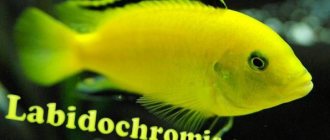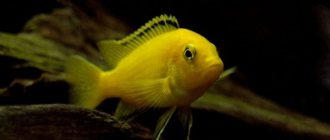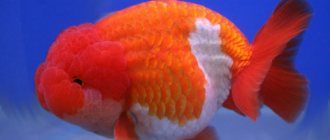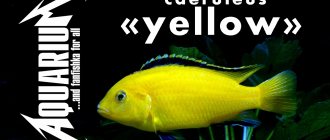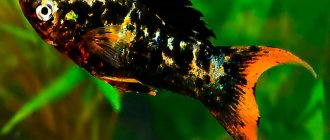Labyrinth
Gourami
Cockerel
Labyrinth fish are common among aquarists and are valued for their unpretentiousness and the absence of the need to organize additional aeration in the aquarium. Most representatives of labyrinths have bright colors and luxuriously shaped fins. They are also respected for their calm and peaceful disposition.
Labyrinth fish can live in small amounts of water. Representatives of the group are able to breathe external air by swallowing it through their mouths. In this case, the air should be warm and humid.
What is a labyrinth?
Everyone knows that fish breathe using gills. They pass water through this organ, taking oxygen from it. But some species differ from the general mass in the structural features of the body and the way they breathe. These are labyrinth fish that have an accessory respiratory apparatus.
In the process of evolution, some species developed a special organ, which is commonly called a labyrinth. This is a group of plates of bone tissue, which is densely intertwined with blood capillaries. The labyrinth organ is located on both sides of the head, near the gills. The presence of this organ in a large group of fish species allowed scientists to combine them into one group and call it Labyrinthidae.
In order for air to get into the labyrinth, the fish has to come to the surface and swallow air. It is this feature of the body that allows labyrinths to live in bodies of water with low oxygen levels. If there is clean water with a high oxygen content in the aquarium, but the fish do not have access to air, they will die.
It is important to remember that the adnexal respiratory apparatus is formed only 2-5 weeks after birth. Fry, unlike adults, need clean, oxygenated water.
Labyrinth fish have a calm disposition (with the exception of Siamese bettas), but can be aggressive during the spawning period. All species in this group prove to be excellent parents and take careful care of their offspring. The male is able to build a foam nest from air bubbles, which he places in the thick of algae. The structure is attached using mucus. This is where the eggs will be located.
Siamese cockerels during mating games.
All labyrinths have parental instincts. This is especially true for males. They take especially careful care of their offspring and jealously protect them.
Some representatives live exclusively in special water chemistry, but all labyrinth fish need warm, moist air above the surface of the water.
Breeding
It is not difficult to breed these fish. Aquarists note that in a species aquarium the process occurs without creating special conditions. It is enough to have a sexually mature couple, about a year old.
Cichlids spawn once every two months. However, to stimulate fish to reproduce, it is enough to add fresh water every day and raise the temperature by a few degrees.
During this period, the fish are very interesting to watch. The male prepares the nest, choosing a suitable stone and carefully cleaning it of debris. Then, he invites the female there and fertilizes the intended eggs. After this, the female collects the eggs in her mouth and carries them for about 2-3 weeks. During one spawning, the female can produce up to 70 eggs.
To ensure that most of the fry survive, the female is transplanted into a separate spawning tank at the incubation stage. When the babies hatch, the adult is put back.
The fry are fed live dust or Artemia nauplii. After a couple of months, they can be switched to adult food.
Cockerel
This species tops the list of the most common and unpretentious labyrinth fish. Thanks to many years of selection, there are many forms on sale that differ not only in color, but also in the shape of their fins. There are about seventy breeds.
The most favorable conditions are a tank with a volume of 20 liters or more. It should have a lot of shelters and living plants. When combining with other species, it is important to take into account the similarity of water parameters and maintenance conditions.
The minimum volume of the reservoir is 5-10 liters. You need to install a filter in the aquarium and plant plants. Setting up the biobalance is very important, as this will simplify caring for your pet.
A distinctive feature of cockerels is their disgustingly quarrelsome character. Thanks to him, all types of cockerels are classified as so-called fighting cockerels. Male cockerels always fight among themselves when they meet. If a female is present nearby, then she too will be attacked and can be seriously injured. For this reason, cockerels are placed in a small aquarium one at a time.
If two males of the same size meet, they begin to demonstrate the size of their fins and the brightness of their color. After some time they start a fight. They open their mouths wide and bite the enemy's body. The male who has won does not allow the opponent to the surface of the water so that the latter cannot take a breath of air. As a result, the defeated cockerel dies.
You should know that two males will not get along in one body of water, even if the aquarium is very large. They will conflict over territory and females. Also, some males may show aggression towards the female during the spawning period if she is not to her liking.
In one aquarium, a betta will not get along with slow, small and veiled fish of other species. If a goldfish lives in a pond, then you shouldn’t put a cockerel there. Also, the species is incompatible with cichlids and other labyrinths. Cockerels simply eat small snails, and pinch off the whiskers of large ones.
You can live with speckled catfish, zebrafish, mollies, tetras and other active and nimble species that can run miles to defend their interests. It is important that the neighbors are as unlike the cockerel in appearance as possible.
Description of appearance
Fish of the species Haplochromis belong to the Cichlid family, a genus of ray-finned fish. This species readily interbreeds with closely related ones, resulting in hybrids that complicate the study of this group.
Haplochromis have an elongated body, a pointed head and large eyes. The average length of the fish is about 15-16 cm. It has powerful fins that are brightly colored. Typically, the anal fin is more colorful and has spots. The tail has the shape of a triangle and is not cut.
The color of a fish is difficult to determine because it depends on the species. There are also deep blue fish (haplochromis cornflower), yellow, red, almost black and even rainbow specimens. The color of males, as a rule, is brighter, the saturation increases during the mating season.
As mentioned above, the cichlid is found in the waters of the Great Lakes of Africa. They were formed as a result of shifting tectonic plates.
Gourami
Under natural conditions, gourami live in stagnant water. It is not advisable to organize a fast flow in an aquarium. The optimal volume of the aquarium is from 50 liters. You can do without aeration, gourami do not need it, but for a general aquarium it should be. Oxidative processes play an important role in an artificial reservoir.
Appearance of a marbled gourami.
It is important to avoid high concentrations of nitrites, nitrates and ammonia. This can be disastrous for the inhabitants of the aquarium.
Gourami like dense grasses, but also need space to swim. Dark soil, bright lighting and the presence of snags are the factors necessary for the existence of labyrinth fish.
Gourami prefer a mature biological environment, where all the processes of biogeocenosis are established. The nitrogen cycle should work like clockwork.
This species is considered peaceful and gets along well with loaches, thorns and other calm species. It is better not to house swordtails and barbs.
Compatibility chart of gouramis with other aquarium inhabitants.
Subspecies and breeds of gourami:
Honey
Representatives of the breed are small in size. The color is golden or red. Keep in pairs or groups. The volume of the aquarium is 40 liters with a large number of live plants. Gets along well with calm fish.
Pearl
The fish have an unusual color. There are many spots on the silver-violet background. Pearl gourami grows up to 12 cm. It is better to keep these fish in small schools with a predominant number of females. Get along with peaceful species.
Dwarf
The appearance is slightly reminiscent of a betta, only the fins are slightly smaller. Also, the dwarf gourami cannot boast of bright colors. These unpretentious fish do not grow more than three to four centimeters and prefer to live in schools. They prefer species aquariums with plenty of hiding places.
Marble
An artificially bred breed valued for its bright color. There are many dark spots on the silver background. Representatives of the breed reach 13 cm in length. Compatible with fish with the same character. Loves abundant vegetation.
Other popular fish
Each breed is unique and may not conform to the general characteristics of the family to which it belongs. Each aquarist has to choose for himself which fish are suitable for him and the conditions that he can create for them.
The well-known piranhas are admired by predator lovers. And also Aristochromis cristi, a large carnivorous fish, colored in blue and gray tones, won the place. The following types of fish are distinguished: Sickle-tailed barracuda, Tiger perch, Golden leopard, Carapace, Exodon.
Among the non-standard aquarium dwellings, the most notable are the Toadfish and the Leaffish, named for their appearance, the fisherman catfish with a specific body shape, and the Bornean tetradon - the owner of red eyes. Fish with a transparent body, for example, Glass Angel and Glass Perch, look unique.
There is also a group of Killi fish, united by their habitat. The list of fish includes about 1270 items. In nature, Killi live in small bodies of water, this is reflected in the appearance of the fish and gives them a similarity. The names of some of the species are: Azrak carp, Notobranchius Rachova, Panhax, Myers's fish, Florida and Japanese Orysia.
Calm and peaceful species of aquarium fish include the Spiny Catfish, Bolivian Butterfly, Geophagus Orangehead and Imperial Minnow.
Lyalius
A small fish 5-6 cm long. The minimum volume of the aquarium is 20 liters. If you keep a flock, the volume of the reservoir should reach 50 liters.
Lalius are fish that are not recommended for beginners. They are very shy and suspicious. Stress causes illness.
The nitrogen cycle must be established in the reservoir. Content temperature + 27 C0. The water is soft and slightly acidic, pH less than 7. Only under such conditions the risk of disease is reduced to a minimum.
It is important to place a large number of plants and create shaded areas. It is good if plants such as riccia, duckweed or pistia float on the surface of the water.
You can keep several males in one pond, provided there are a sufficient number of females and plenty of space.
Akara turquoise
Andinoacara rivulatus Turquoise acara is a breeding form of blue acara and has a more rich and expressive color. Turquoise acara at.
Aquarium fish are popular among pets. They are silent and do not take up much space, do not require specific care or a lot of time. Once you get the idea of purchasing a couple of ornamental fish, you need to learn in detail about the characteristics of each species and maintenance requirements, and when purchasing, be guided by the names of the fish.
Macropod
It has a long, large body that reaches 10 cm. A three-centimeter tail visually lengthens the fish. The color is rich olive or blue. Breeders have created many breeds that differ only in color. Males are brighter in color, females are more modest. Macropods live in an aquarium for up to 5 years.
A 40 liter tank is enough to keep one boy and two girls. They can jump out of the water, so a cover is necessary. A large aquarium can contain several pairs. Does not tolerate loneliness well and begins to attack representatives of other species.
Different color variations of macropods can be mixed with each other.
Macropods are able to get along with gouramis, barbs, mollies, swordtails and other calm fish. You should not house with species that have veil fins, as well as angelfish, discus, neons, and telescopes.
Ctenopoma leopardum
The leopard coloring of the fish helps it hide among the plants. Ctenopoma grows up to 15-20 cm. For this reason, representatives of the species should not be settled in a reservoir of less than 100 liters. It is also important to cover the aquarium with glass or a lid. This is due to the fact that the fish can take a breath of cold air and get sick.
Ctenopoma prefers moderate lighting, abundant vegetation and the presence of darkened areas. It is advisable to place driftwood, create grottoes and other secluded places where the fish can hide and sleep.
Ctenopoma is a nocturnal predator, but prefers only small fish. If the inhabitants of the aquarium are the same or larger in size, then she simply will not pay attention to them.
It cannot fully exist if there is no filter.
For reproduction, the male creates a foam nest. He carefully looks after the eggs, but if disturbed, he immediately begins to scatter the eggs and stops all care for the future offspring.
Feeding
When breeding cichlids at home, you should know that this species is not picky about food. Striped fish prefer live and frozen food:
- bloodworm;
- Artemia nauplius;
- tubifex;
- Daphnia.
But the diet should not consist of only animal food. 1/3 of the diet can be allocated to plant foods. Cichlids love cucumbers and zucchini - they need to be cut into small pieces, as well as dandelion leaves, lettuce, nettles, and duckweed.
Striped fish should be fed 2 times a day! Portions should be small, as black-striped cichlids have an excellent appetite, which often leads to overeating. A fasting day is required once every 7 days. All this applies to adults. The fry should eat 6 times a day.
Fish are omnivores, so sometimes they can be pampered with minced meat, pearl barley and oatmeal, and seafood. After such feeding, the water becomes cloudy and dirty. Therefore, you cannot sprinkle a lot of such food. After feeding, be sure to turn on the filter to a higher power mode.
If the color of Zebras is bright, iridescent and expressive, it means that the fish eat balanced food.
Safe maintenance largely depends on proper nutrition
Does a labyrinth aquarium really require no equipment?
Labyrinth fish can live in water without oxygen because they breathe outside air. For this reason, it is somewhat easier to equip an aquarium for them than for other species. But this does not mean that the reservoir does not require equipment and favorable conditions.
Rules for setting up an aquarium for labyrinths:
- First of all, the aquarium must be covered with a lid, but loosely - for air circulation. All types of labyrinth fish come to the surface and swallow air. It must be moist and warm so that the fish does not get cold. Also, some representatives of labyrinths have the habit of jumping out of the water and may find themselves outside the reservoir.
- There may be gravel or fine sand at the bottom of the tank. If you plan to place plants, it is better to use soil with sufficient nutrients.
- Many species prefer to hide in shelters. This makes them feel safe and calm. These can be thickets of algae, artificial caves and grottoes, and driftwood of natural origin. It is important to place plants in the aquarium that reproduce quickly and will float on the surface of the water, such as duckweed.
- For most fish, you can use settled tap water, but some fish prefer soft and acidified water.
- Labyrinth fish live in tropical climates. For this reason, the water temperature should not fall below +26 C0. They also prefer "old water" and frequent changes can lead to fighting. To calm the inhabitants of the aquarium in such a situation, it is necessary to reduce the temperature. The table below shows average data on water quality for labyrinths.
Volume of water (liters per 1 individual) Temperature (°C) Acidity (pH) Hardness (dGH) depending on the type 23-28 5,5-8 5-15 - You can do without a filter and compressor. You still need to filter the water, but models with the lowest power ratings are suitable. Representatives of the group do not tolerate fast currents well. The filter outlet should be directed towards the wall of the aquarium. Aeration is needed if there are fry in the aquarium. For up to three weeks they breathe oxygen contained in the water.
- A feeder is not needed for labyrinths.
Labyrinth fish die if ammonia, nitrates and nitrites accumulate in the aquarium. These are poisons that have a negative effect on all living organisms. To prevent a catastrophe, it is worth regularly testing the water and bringing it back to normal if the indicators increase.
Labyrinth fish require care and attention, but more than pay the bills with their striking appearance, curious behavior and hardy character.
Fish can die not only from poisons, but also from stress. This happens if the fish lives in a small aquarium. Some species are schooling, and if a fish cannot live alone, it dies. Also, aggressive neighbors often affect the emotional state.
It must be remembered that when transporting any species of labyrinth fish, pure oxygen cannot be pumped into the bag. This can cause respiratory burns and death.
Keeping and breeding labyrinth fish is simple and does not require much effort. It is important to provide pets with the necessary conditions and to prevent an increase in the concentration of toxic substances in the aquarium.
Fish ailments
Unfortunately, even under optimal conditions, neon babies can get sick. It’s good if the disease turns out to be curable, and the owner is vigilant. Then the fish has a good chance of being saved. But there are also incurable diseases that the owner needs to know about. Here are some diseases of common neons:
In fish with neon disease, the neon stripes begin to fade and disappear.
- Neon disease. This is an incurable fungal infection of the body of the neon fish, from which it quickly dies. If the neon strip has faded and the fish refuses to eat, there is a high probability that the pet is sick. As a rule, in this case the entire aquarium is susceptible to rapid death, and the owner can only liquidate the contents and disinfect the container with soil.
- Dermatocystidiasis. Thin white “worms” – cysts – form on the body of the neon fish. Disputes develop within each entity. Parasites infect fish until vital organs cease to function. The chances of survival are minimal. However, there are cases where the elimination of sick fish helped save the remaining individuals from infection.
- Fin rot. The negligence of the owner is the main cause of this disease. If the water in the aquarium is of consistently poor quality, the fins will begin to decompose. But, fortunately, timely measures save the entire flock, including those who are sick.
